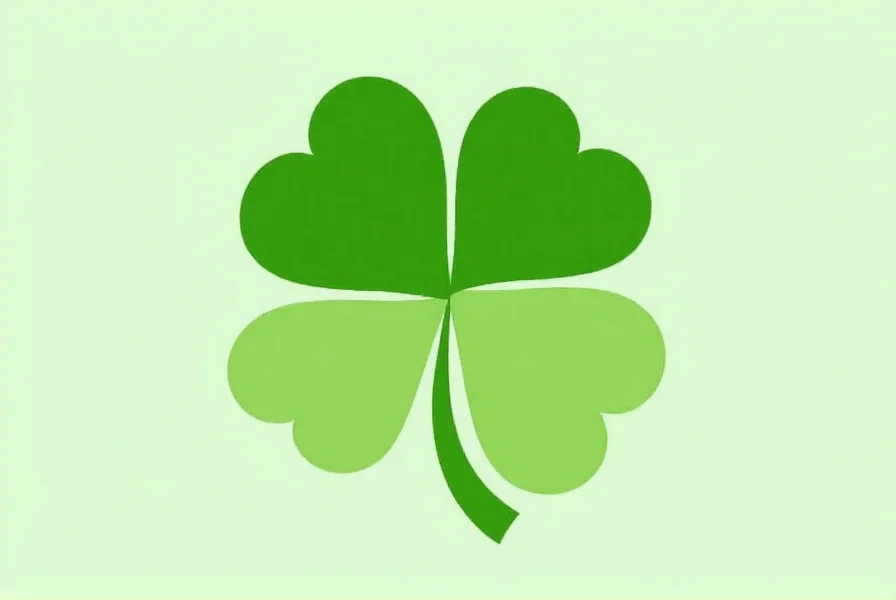The clover symbol carries deep historical and cultural significance that spans centuries and continents. Understanding the meaning of clover symbol requires examining both its botanical origins and its evolution through human interpretation. This unassuming plant has become one of the most recognizable symbols worldwide, particularly associated with Irish identity and good fortune.
Historical Origins of Clover Symbolism
Clover symbolism dates back to ancient times, with early Celtic cultures viewing the three-leaf shamrock as sacred. Druids considered the triangular shape mystical, representing earth, sea, and sky. When Christianity spread to Ireland in the 5th century, Saint Patrick famously used the three-leaf clover to explain the concept of the Holy Trinity to pagan Irish residents. This strategic adaptation transformed the clover symbol from a pagan emblem to a Christian teaching tool.
Three-Leaf Clover Meaning in Modern Context
The traditional three-leaf clover, or shamrock, remains Ireland's national symbol. Each leaf carries specific meaning in Christian interpretation:
| Leaf Position | Symbolic Meaning |
|---|---|
| First leaf | Faith |
| Second leaf | Hope |
| Third leaf | Love |
This three-leaf clover meaning extends beyond religious contexts. In modern symbolism, the shamrock represents Irish heritage, St. Patrick's Day celebrations, and general good fortune. The term "shamrock" comes from the Irish word "seamróg," meaning little clover.
Four-Leaf Clover Symbolism and Rarity
The four-leaf clover symbolism differs significantly from its three-leaf counterpart. Finding a four-leaf clover is considered exceptionally lucky because the mutation occurs naturally in only about 1 in 10,000 clovers. Each leaf represents a different blessing:
- First leaf: Faith
- Second leaf: Hope
- Third leaf: Love
- Fourth leaf: Luck
Botanically, the four-leaf variation results from a recessive gene in white clover (Trifolium repens). This genetic mutation explains why entire fields might occasionally produce higher concentrations of four-leaf specimens. The meaning of clover symbol transforms with this rare variation, shifting from religious symbolism to universal good fortune.

Cultural Interpretations Across Societies
While most strongly associated with Irish culture, clover symbolism appears worldwide:
- Ancient Egypt: Viewed clover as a symbol of fertility
- Medieval Europe: Considered protective against evil spirits
- Victorian Era: Used in floral arrangements to convey gratitude
- Modern Japan: Extremely popular motif representing good fortune
The clover symbol in Christianity remains particularly strong in Catholic traditions, where shamrock imagery appears in religious art and architecture. However, its meaning has broadened to represent general positivity across secular contexts.
Contemporary Usage of Clover Symbolism
Today, the clover symbol appears extensively in:
- Fashion and jewelry design, particularly around St. Patrick's Day
- Sports team logos (Boston Celtics, Shamrock Rovers FC)
- Corporate branding for luck-related products
- Tattoo art representing heritage or personal beliefs
Understanding why is clover a symbol of luck requires recognizing its journey from ancient religious symbol to universal emblem of fortune. The botanical rarity of four-leaf specimens combined with centuries of cultural reinforcement has cemented its status in popular consciousness.
Botanical Facts Behind the Symbol
The clover symbol originates from actual plants in the Trifolium genus. White clover (Trifolium repens) is the species most commonly associated with both three-leaf and four-leaf variations. These hardy perennials thrive in temperate climates worldwide, explaining their widespread cultural adoption.
Modern genetic research has identified the exact gene responsible for the four-leaf mutation, allowing some commercial growers to produce "lucky" clovers reliably. However, naturally occurring four-leaf clovers remain prized precisely because of their rarity in the wild.
Conclusion
The clover symbol's enduring appeal stems from its dual nature as both a natural botanical phenomenon and a culturally constructed emblem. From ancient Celtic traditions to modern commercial applications, this simple plant has maintained remarkable symbolic power. Whether viewed through religious, cultural, or botanical lenses, the meaning of clover symbol continues to evolve while retaining its core associations with faith, hope, love, and luck.
Frequently Asked Questions
What does the clover symbol represent in Irish culture?
In Irish culture, the three-leaf clover (shamrock) represents national identity and heritage. Saint Patrick used it to explain the Holy Trinity to Irish pagans, making it a powerful Christian symbol that later became Ireland's national emblem. The clover symbol appears on Irish coins, military insignia, and is central to St. Patrick's Day celebrations worldwide.
Why is a four-leaf clover considered lucky?
A four-leaf clover is considered lucky because of its natural rarity—occurring in approximately 1 in 10,000 specimens. Each leaf represents a different blessing: faith, hope, love, and luck. This rarity made finding one exceptional, leading to the belief that possessing one would bring good fortune. The meaning of clover symbol transforms with this rare variation from religious symbolism to universal good luck.
What's the difference between a shamrock and a four-leaf clover?
A shamrock specifically refers to the three-leaf variety of clover (typically white clover) that serves as Ireland's national symbol with Christian religious significance. A four-leaf clover is a rare genetic mutation of the same plant species. While both are types of clover, the shamrock has cultural and religious meaning, whereas the four-leaf version symbolizes luck due to its rarity. The clover symbol in Christianity specifically references the three-leaf variety.
Can you explain the Christian symbolism of the three-leaf clover?
According to tradition, Saint Patrick used the three-leaf clover to explain the Holy Trinity to Irish pagans in the 5th century. Each leaf represents one aspect of the Christian God: the first leaf symbolizes the Father, the second the Son, and the third the Holy Spirit—all part of one divine being. This three-leaf clover meaning transformed the plant from a pagan symbol to a Christian teaching tool, cementing its place in Irish religious and cultural identity.










 浙公网安备
33010002000092号
浙公网安备
33010002000092号 浙B2-20120091-4
浙B2-20120091-4